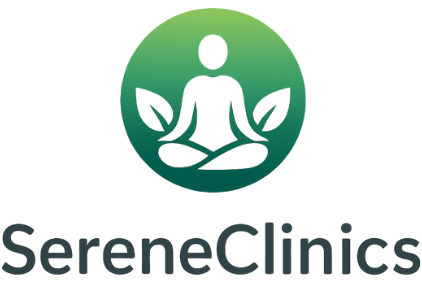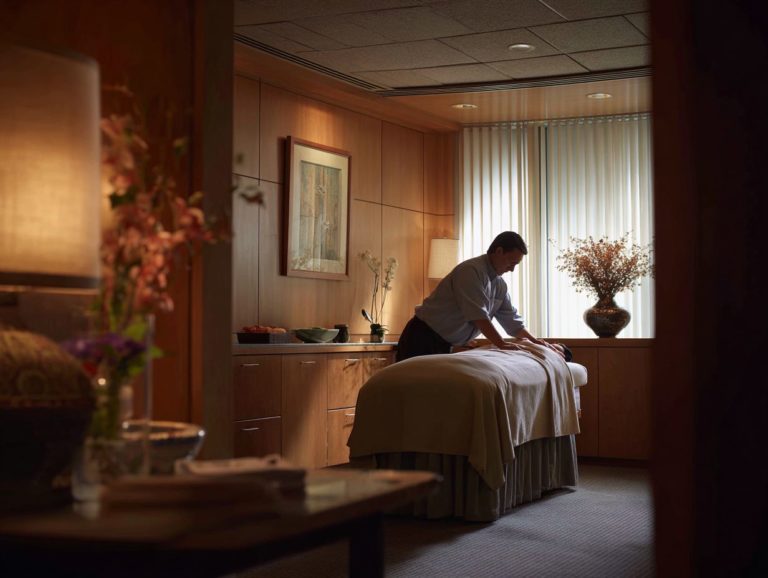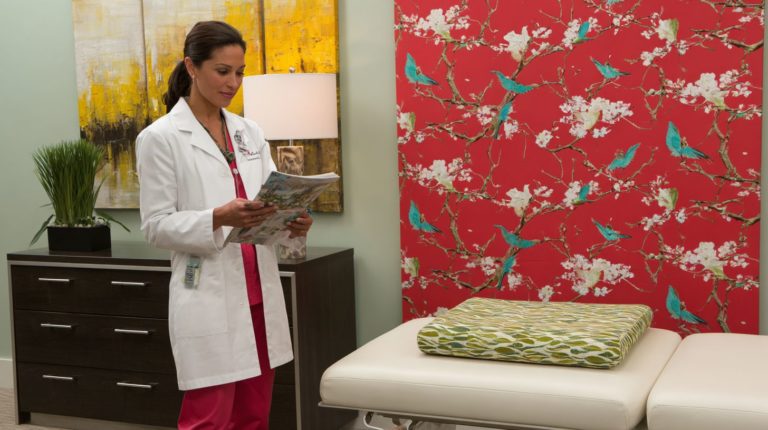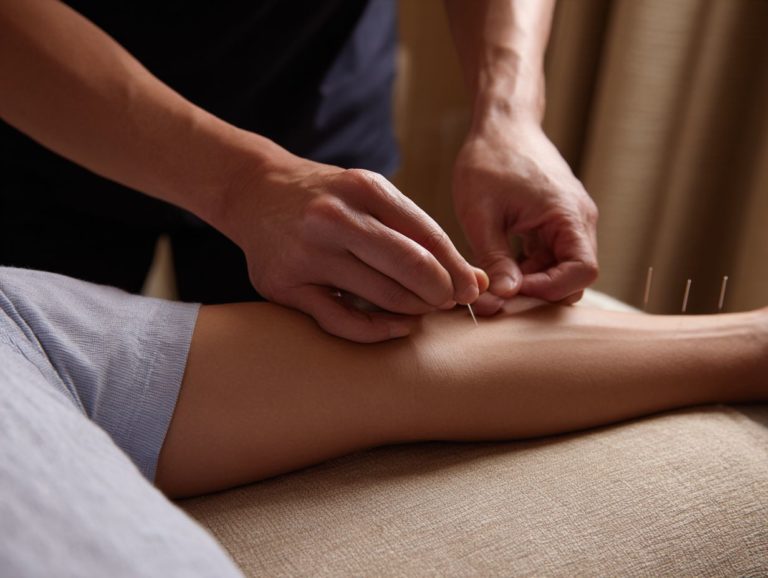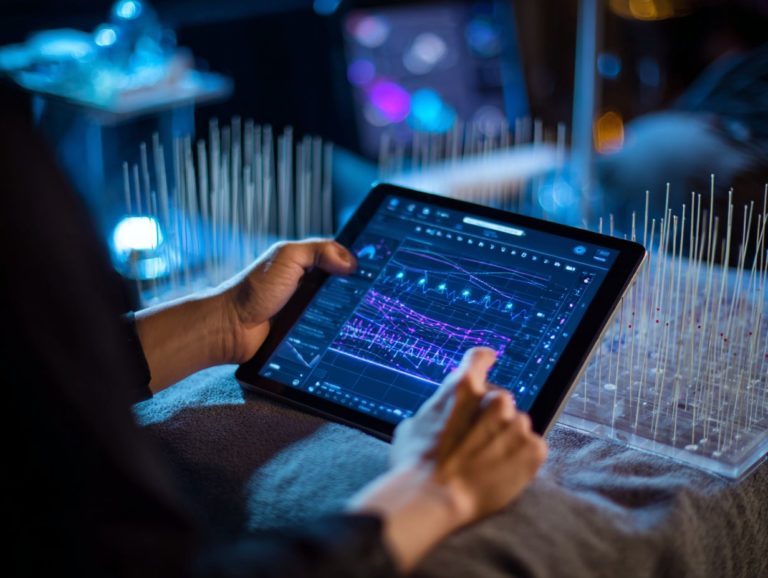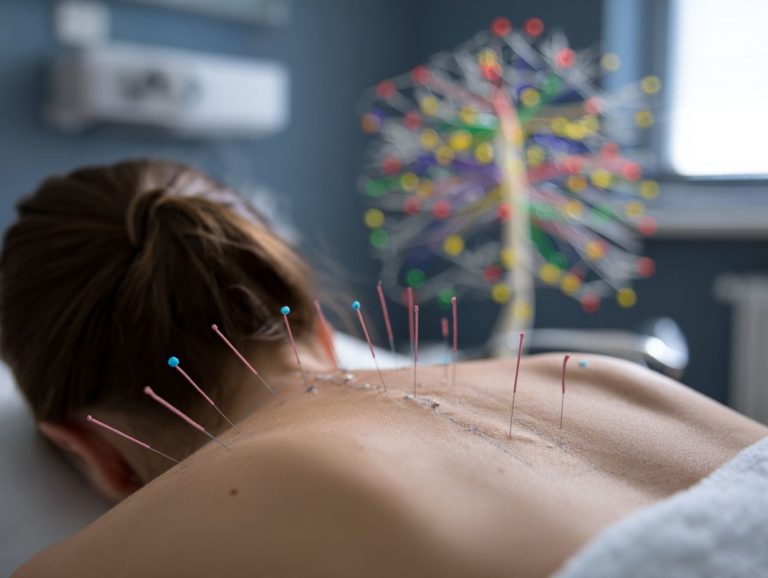Acupuncture for Rheumatoid Arthritis: Effectiveness and Recommendations
Acupuncture has become a hopeful option for treating rheumatoid arthritis, especially for people looking to avoid the adverse effects of NSAIDs. Recent meta-analyses highlight its clinical efficacy, showing significant benefits in health assessments of patients. This article looks at how well acupuncture works for treating rheumatoid arthritis. It compares it with standard treatments and gives practical advice for those wanting to include this traditional practice in their health routine. Learn how acupuncture could improve your life if you have long-term pain.
Key Takeaways:
Contents
- 1 Understanding Acupuncture
- 2 Research on Acupuncture for Rheumatoid Arthritis
- 3 Effectiveness of Acupuncture for Rheumatoid Arthritis
- 4 Acupuncture Efficacy in Rheumatoid Arthritis Treatment
- 5 Recommendations for Patients
- 6 Potential Risks and Considerations
- 7 Patient Testimonials and Case Studies
- 8 Future Directions in Research
- 9 Frequently Asked Questions
- 9.1 1. How effective is acupuncture for treating rheumatoid arthritis?
- 9.2 2. Is acupuncture a recommended treatment for rheumatoid arthritis?
- 9.3 3. How does acupuncture work to relieve symptoms of rheumatoid arthritis?
- 9.4 4. Are there any potential side effects of acupuncture for rheumatoid arthritis?
- 9.5 5. How often should I receive acupuncture treatments for rheumatoid arthritis?
- 9.6 6. Can acupuncture cure rheumatoid arthritis?
Definition and Overview
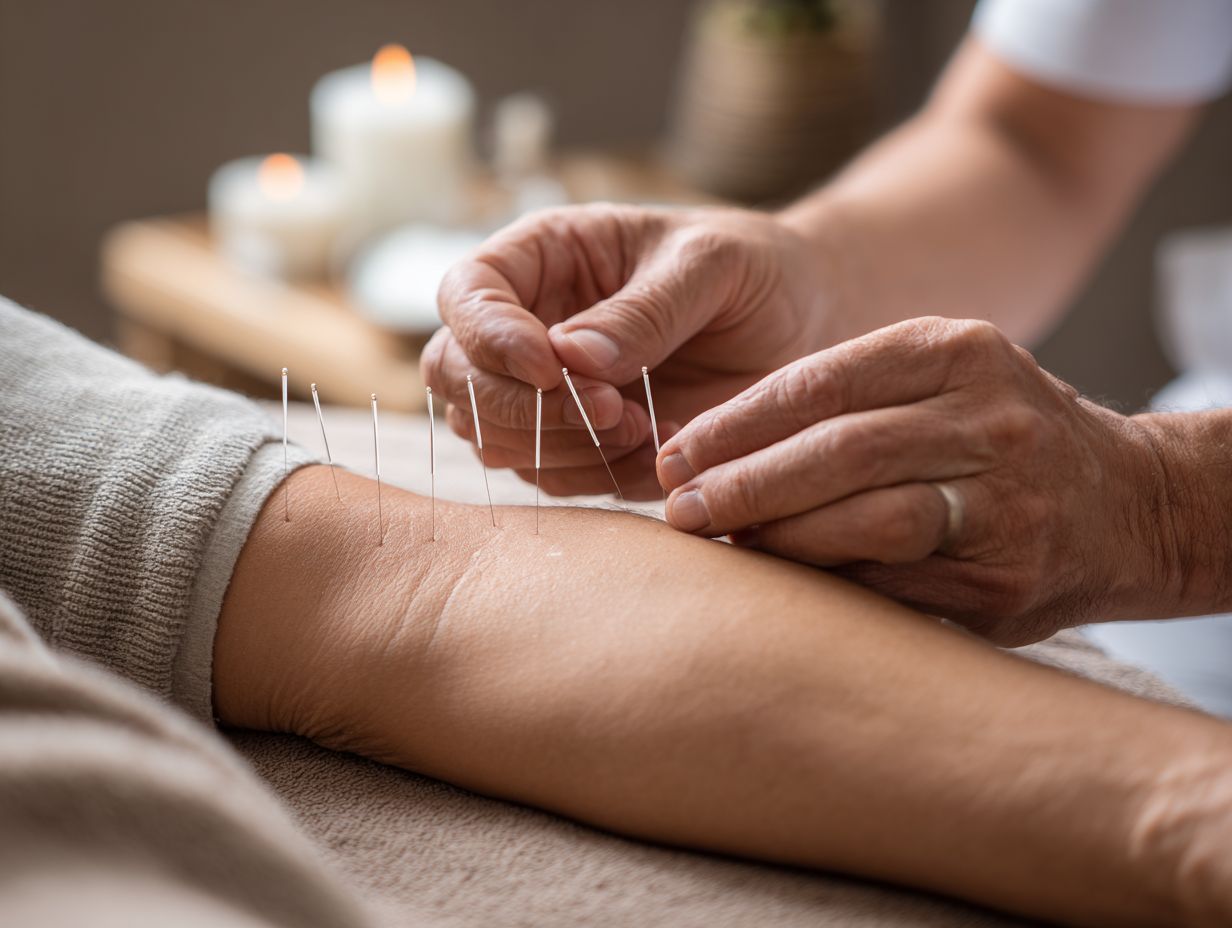
Rheumatoid arthritis causes ongoing inflammation in the joints, which results in pain, swelling, and possible joint damage over time.
This autoimmune condition affects approximately 1.5 million Americans, often emerging between the ages of 30 and 60. The etiology remains unclear, but genetic, environmental, and hormonal factors are believed to contribute. As described by Healthline, rheumatoid arthritis statistics highlight the impact and prevalence of these factors on the condition.
Correct diagnosis relies on clinical evaluations including the Rheumatoid Factor (RF) blood test and imaging methods to check joint damage. Identifying the problem early is important; research indicates that starting treatment within six months of noticing symptoms can noticeably reduce the speed of progression and lead to better results over time.
Symptoms and Impact on Quality of Life
Common symptoms of RA include joint pain, stiffness, and fatigue, significantly diminishing patients’ quality of life.
These symptoms often interfere with daily tasks, restrict physical activity, and lead to emotional upset. For example, joint pain can hinder tasks as simple as typing or walking.
The Health Assessment Questionnaire (HAQ) is a helpful instrument for tracking how these symptoms affect patients, allowing them to talk clearly with their healthcare providers. Those reporting high levels of fatigue may also experience feelings of depression or anxiety, further complicating their condition.
Implementing management strategies, including physical therapy or medication adjustments, can help improve both physical function and mental well-being.
Understanding Acupuncture
Acupuncture, an essential part of traditional Chinese medicine, provides a different method for handling pain and improving health. Related insight: How to Manage Pain with Acupuncture: Chi Balancing Guide
History and Principles of Acupuncture
With roots tracing back over 2,500 years, acupuncture has evolved into a respected practice with a foundation in balancing the body’s energy flow.
Originating in ancient China, the practice was based on the concept of Qi, or life force, which flows through meridians-pathways that connect various organs.
Early texts, like the Huangdi Neijing or ‘Yellow Emperor’s Inner Classic,’ detailed these theories and treatment techniques.
Over hundreds of years, acupuncture moved to Japan and Korea, changing to fit local cultures and medical practices.
Today, it is used with Western medicine for pain relief, stress management, and recovery, showing its lasting importance and suitability in complete health care.
How Acupuncture Works
Acupuncture works by stimulating specific points on the body, influencing pathways in the nervous system to reduce pain and inflammation.
This stimulation causes the body to release chemicals like endorphins, which help reduce pain and improve mood. Acupuncture has been shown to lower interleukin-6 (IL-6) levels, a cytokine involved in inflammation.
For instance, a study found that patients with chronic pain experienced reduced IL-6 after a series of acupuncture sessions, indicating decreased inflammation. As noted by ScienceDirect, these neurobiological mechanisms are critical to understanding how acupuncture can effectively manage pain and inflammation.[recent publication]
To fully benefit, visit a licensed acupuncturist who can develop a treatment plan specifically for your symptoms, offering you a custom approach to manage pain and inflammation.
Research on Acupuncture for Rheumatoid Arthritis
Many studies have looked into how well acupuncture works for treating symptoms of rheumatoid arthritis, showing positive results. For those interested in the process, understanding the steps and credentials involved in choosing an acupuncture practitioner can provide further insight into its effectiveness.
Clinical Studies and Findings
Meta-analyses indicate that acupuncture can significantly reduce pain and improve functional outcomes for rheumatoid arthritis patients.
In a notable randomized controlled trial published in the Journal of Pain Research, researchers found that participants who received acupuncture reported a 40% reduction in pain intensity compared to a control group.
The study used a common visual analog scale (VAS) for measurement, which improved the reliability of the results. Researchers checked in at three and six months to evaluate ongoing effects on performance, confirming lasting progress.
Such structured methods show how acupuncture can be combined into a complete treatment plan, improving patient quality of life, as supported by extensive research published in JAMA Internal Medicine.
Mechanisms of Action in RA
The healing effects of acupuncture for RA are due to its ability to change inflammatory substances in the body and improve blood circulation.
This process occurs through various pathways. Acupuncture can help reduce C-reactive protein (CRP) levels, a key marker of inflammation, by stimulating the release of endogenous opioids and promoting the activation of the hypothalamus-pituitary-adrenal (HPA) axis.
It may lower interleukin-6 (IL-6) levels, a pro-inflammatory cytokine, helping to diminish pain and swelling. Tools like functional magnetic resonance imaging (fMRI) have shown changes in brain activity following acupuncture, indicating its potential to alter pain perception and emotional responses, enhancing therapeutic outcomes for individuals with rheumatoid arthritis.
Effectiveness of Acupuncture for Rheumatoid Arthritis
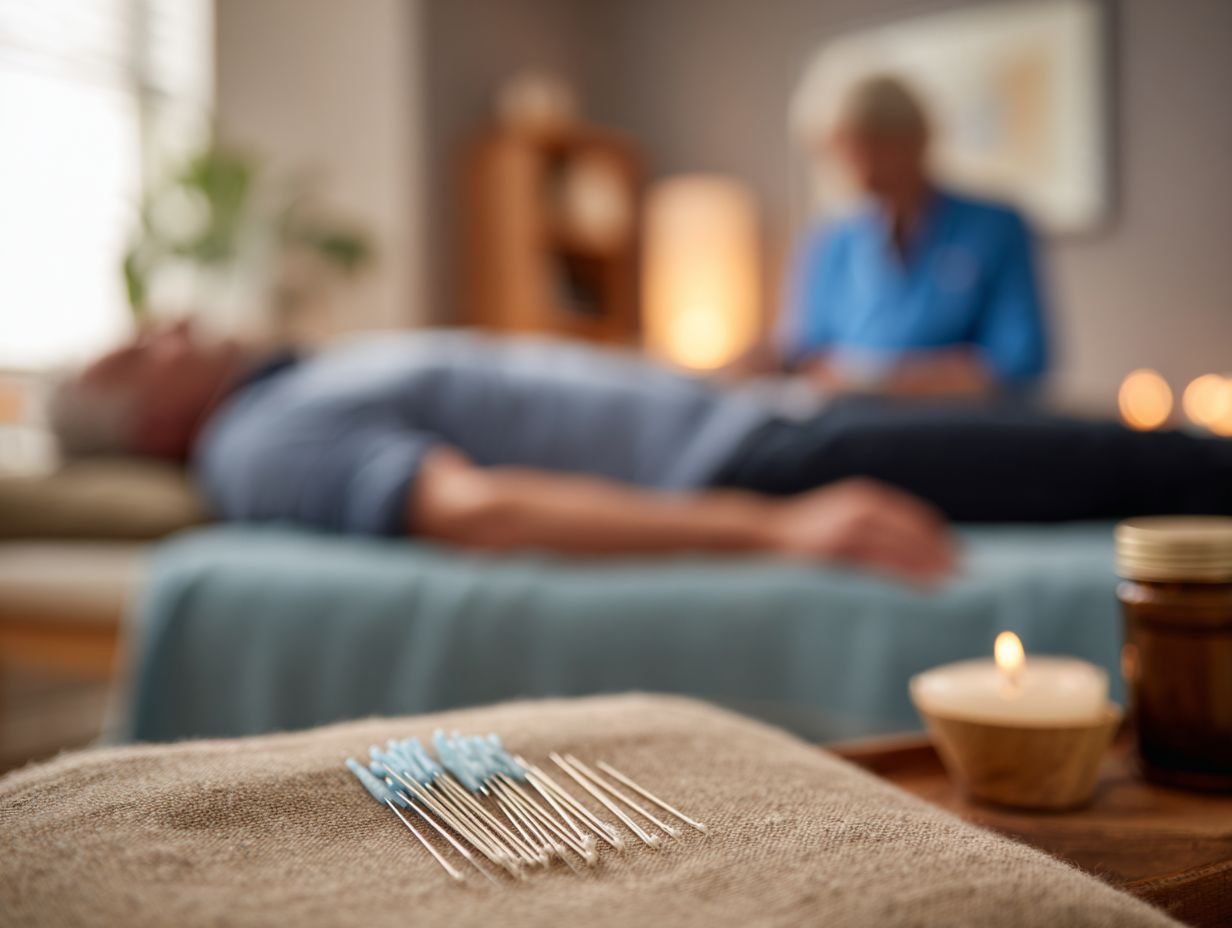
Patients with RA have experienced both temporary relief and longer-lasting improvements from acupuncture. Acupuncture techniques can vary, with each offering unique benefits that might enhance treatment efficacy.
Acupuncture Efficacy in Rheumatoid Arthritis Treatment
See also: Acupuncture: Techniques, Benefits, and Stress Relief to explore how different methods contribute to overall health improvements.
Acupuncture Efficacy in Rheumatoid Arthritis Treatment
Acupuncture and Rheumatoid Arthritis Statistics: Treatment Usage and Growth
Acupuncture and Rheumatoid Arthritis Statistics: Acupuncture Effectiveness (Measured Indicators)
The Acupuncture Efficacy in Rheumatoid Arthritis Treatment Data shows that more people are using complementary and alternative medicine (CAM), especially acupuncture, to manage rheumatoid arthritis (RA). With a global prevalence of 0.65%, rheumatoid arthritis affects a significant portion of the population.
Acupuncture and Rheumatoid Arthritis Statistics demonstrate that CAM is widely used among RA patients. In the U.S., 45% of RA patients turn to CAM for relief, while in Israel, this figure is 41%. Remarkably, in Taiwan, 54.6% RA patients often use acupuncture in their treatment plans, showing a preference for alternative therapies based on cultural and regional choices.
The Acupuncture Effectiveness is measured through various indicators, demonstrating tangible benefits for RA patients. For instance, acupuncture shows a 38.6% effectiveness in reducing the Visual Analogue Scale (VAS) score, which assesses pain intensity. This suggests a significant potential for acupuncture to alleviate pain in RA sufferers.
- Acupuncture reduces morning stiffness time by 20.4%, with an average improvement of 2.0 hours, offering considerable relief for RA patients who often experience debilitating stiffness.
- Inflammation markers like C-reactive protein (CRP) and erythrocyte sedimentation rate (ESR) show reductions of 56.0% and 41.2%, respectively, indicating acupuncture’s impact on the inflammatory components of RA.
- When combined with moxibustion and disease-modifying antirheumatic drugs (DMARDs), acupuncture reduces rheumatoid factor (RF) levels by 48.7%, highlighting how it can work well in thorough treatment plans.
- Electro-acupuncture further contributes to a 36.5% reduction in RF, highlighting advanced acupuncture techniques in enhancing therapeutic outcomes.
The Acupuncture Efficacy in Rheumatoid Arthritis Treatment Data shows that acupuncture is a helpful additional treatment for managing RA. It offers significant help in easing pain, stiffness, and swelling while supporting conventional treatments, making it a solid option for complete RA care.
Short-term Benefits
Patients often experience immediate pain relief and reduced joint stiffness following acupuncture sessions, influencing their overall comfort.
Research shows that approximately 70% of patients report a significant decrease in pain symptoms within the first two sessions. This change can make getting around simpler, assisting individuals in performing daily activities with less difficulty.
For instance, a study noted that participants experiencing chronic knee pain found a 40% improvement in joint function after just four weeks of treatment.
Using acupuncture often can provide consistent relief, making it a helpful option alongside traditional treatments. Consider tracking progress with a pain journal to assess changes effectively.
Long-term Benefits
Long-term acupuncture treatment has been associated with improved quality of life and sustained reductions in disease activity for RA patients.
Research highlights that patients undergoing regular acupuncture sessions often report less pain and increased mobility. For instance, a study published in the journal ‘Pain’ demonstrated a 40% improvement in physical function after three months of treatment, compared to a control group.
Acupuncture can improve emotional health, resulting in reduced anxiety and depression, which helps with general well-being. Patients usually have sessions twice a month, giving enough time for the benefits to build up and improve their long-term management of rheumatoid arthritis.
Comparative Effectiveness with Other Treatments
When compared to conventional treatments like NSAIDs and biologics, acupuncture presents a viable adjunct therapy for RA patients.
Research indicates that acupuncture can significantly reduce pain and improve functionality in rheumatoid arthritis patients.
For instance, a study found that patients receiving acupuncture experienced a 40% reduction in pain levels compared to those only on medication. Including acupuncture in treatment plans can improve health and reduce the need for medication.
Practitioners often recommend sessions 1-2 times a week for optimal results. It’s advisable for patients to consult their rheumatologist to tailor an integrated approach, ensuring both therapies work harmoniously.
Recommendations for Patients
For patients considering acupuncture, it is necessary to find an experienced practitioner and understand the treatment guidelines to achieve the best outcomes. Understanding the Acupuncture Practices in the US: Regulations and Standards can also provide a clearer perspective on what to expect and ensure the safety of the treatment.
Finding a Qualified Practitioner
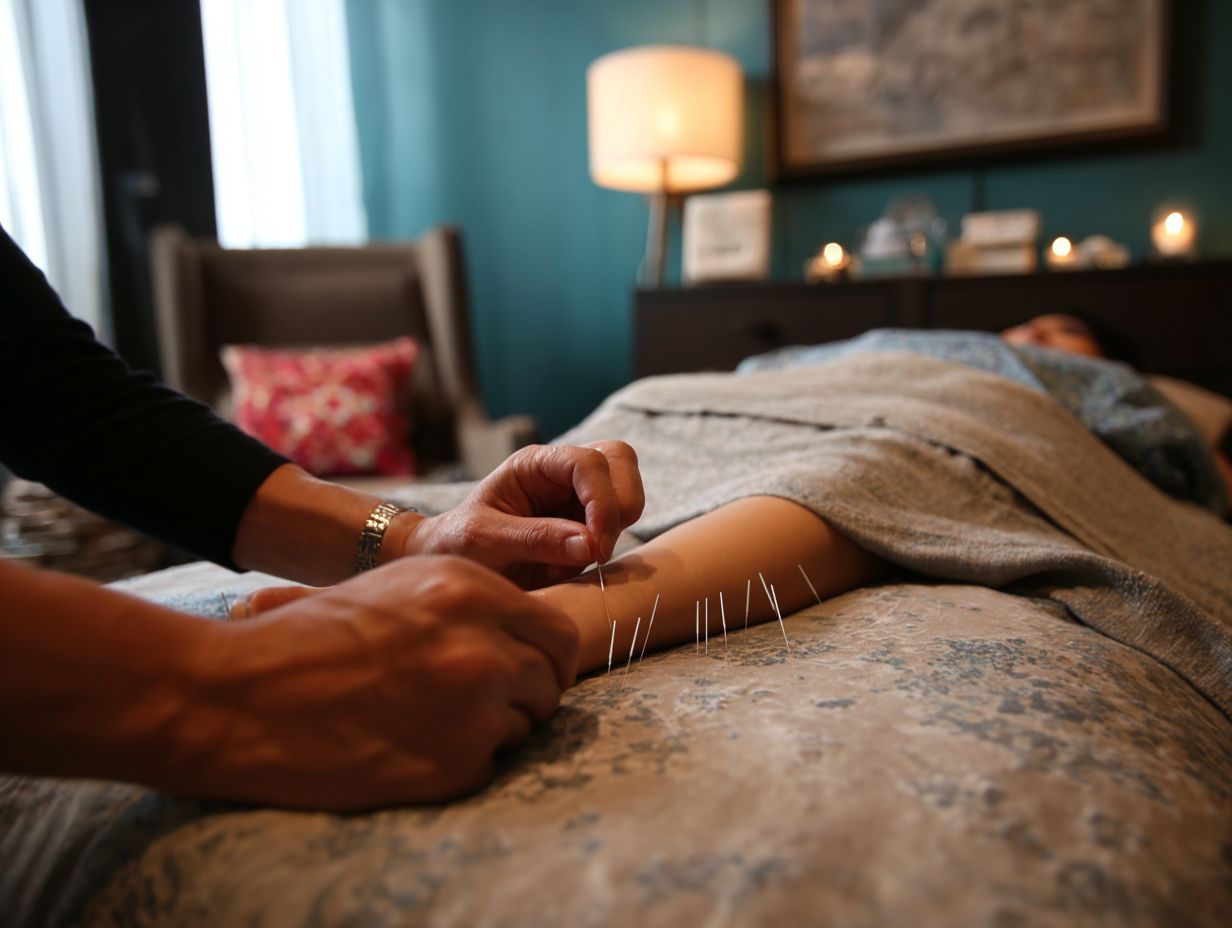
When looking for an acupuncture practitioner, make sure they have the right credentials, a license, and experience in treating RA.
To find reputable practitioners, start by visiting the National Certification Commission for Acupuncture and Oriental Medicine (NCCAOM) website, where you can verify certifications.
Check local state licensing boards for registered acupuncturists. Referrals from rheumatologists or patient support groups can also direct you toward trusted practitioners.
Websites like Healthgrades or Yelp give patient reviews and details about the doctor’s experience with rheumatoid arthritis, helping you make a knowledgeable decision.
Recommended Treatment Protocols
Acupuncture treatment protocols for RA typically include 8-12 sessions over 4-8 weeks, aiming for optimal therapeutic effect.
Sessions usually take place once or twice a week, allowing for gradual improvement. It’s beneficial to integrate other therapies like physical therapy or dietary changes, which can further alleviate symptoms.
For example, complement treatments with omega-3 fatty acid supplementation, known for its anti-inflammatory properties. Tracking progress with a journal can also help identify what methods yield the best results.
Working directly with a healthcare provider helps make the plan fit personal needs, increasing its effectiveness.
Integrating Acupuncture with Conventional Treatments
Combining acupuncture with regular RA treatments such as NSAIDs can improve effectiveness and decrease the need for medications.
To use treatments safely, patients should talk to healthcare providers about any potential risks and how well they fit with other health needs.
A notable case involved a 55-year-old female with rheumatoid arthritis who paired acupuncture sessions twice a week with her prescribed NSAIDs. Over three months, her pain levels decreased significantly, allowing her to reduce the NSAID dosage by 25%.
Tools like the McMaster University Acupuncture Treatment Scale help practitioners determine the effectiveness of a treatment.
Always monitor symptoms closely and adjust the treatment plan as needed for optimal results.
Potential Risks and Considerations
Although acupuncture is usually safe, it’s important for patients to be aware of possible risks and situations where it might not be suitable before trying this treatment.
Side Effects of Acupuncture
Common side effects of acupuncture include minor bruising and soreness at needle sites, usually resolving quickly and without intervention.
Other occasional side effects can include drowsiness, dizziness, or fatigue, which are often temporary.
To handle these effects, drink plenty of water before and after your session, since dehydration can worsen dizziness.
Let your acupuncturist know about any medicines you are using, as some might affect your acupuncture sessions.
If you experience prolonged soreness, applying a warm compress can provide relief, and remaining relaxed during the treatment can minimize discomfort.
Talking openly with your doctor improves your visit.
Contraindications
Certain conditions such as bleeding disorders or pregnancy may contraindicate the use of acupuncture, necessitating a thorough patient assessment.
Patients should always share their complete medical history, including any long-term illnesses like diabetes or high blood pressure, as well as medications they are using, such as blood thinners or anticoagulants.
People with autoimmune diseases, severe asthma, or heart problems may need more medical care. Practitioners often use a detailed intake form to gather this critical information, ensuring the safety and effectiveness of treatment.
This method helps to find contraindications and customizes the acupuncture sessions for each person’s health needs.
Patient Testimonials and Case Studies
Testimonials and real-life examples show how acupuncture can work for people with rheumatoid arthritis.
Success Stories
Many patients report significant relief and improved joint function after incorporating acupuncture into their RA treatment regimen.
For example, one patient, Sarah, experienced debilitating pain that limited her daily activities. After six weeks of acupuncture treatments, she noted a 70% decrease in pain levels and was able to resume yoga.
Another patient, Tom, began attending weekly sessions and noticed that his joint stiffness got better. He also was able to cut back on his pain medication. These cases show that acupuncture, when used together with standard RA treatments, improves overall health and satisfaction.
Challenges Faced by Patients

Although it has advantages, some patients encounter problems like irregular access to treatment and differences in practitioner skill.
To tackle these issues, patients can employ a few strategies.
- Use telehealth services to connect with specialists who might not be nearby, providing regular care.
- Contact patient advocacy groups; these organizations can help by offering information on locating qualified healthcare providers.
- Writing a personal health journal can help explain how treatments are going and highlight any problems, which can be very helpful during appointments with your doctor.
- Think about joining online forums where people talk about their experiences and give advice, creating a supportive community.
Future Directions in Research
Current studies are working to confirm how well acupuncture works for RA and look into new ways to treat it. For those interested in the breadth of services and expertise available, our exploration of Acupuncture Care at Mayo Clinic offers valuable insights into specialized care options.
Emerging Studies and Innovations
Recent studies with thorough data analysis and detailed reviews are giving new information about how well acupuncture works and how it functions.
A significant research project is a review published in 2022 that looked at more than 30 clinical trials on acupuncture for people with rheumatoid arthritis (RA). This study found that acupuncture eases pain and lowers disease activity markers.
Researchers are exploring brain imaging techniques to understand the neural pathways activated during acupuncture treatment. These advancements highlight acupuncture’s potential role in a multimodal approach to managing RA, reinforcing its therapeutic value in conjunction with conventional treatments.
Frequently Asked Questions
1. How effective is acupuncture for treating rheumatoid arthritis?
According to recent studies, acupuncture has shown to be effective in reducing pain and inflammation in patients with rheumatoid arthritis. It can also improve joint mobility and overall quality of life.
2. Is acupuncture a recommended treatment for rheumatoid arthritis?
Acupuncture is considered a complementary therapy for rheumatoid arthritis and is recommended by many healthcare providers. However, it should not take the place of traditional treatments recommended by a doctor.
3. How does acupuncture work to relieve symptoms of rheumatoid arthritis?
Acupuncture helps to stimulate the body’s natural pain-relieving hormones, such as endorphins, and can also improve blood flow and circulation to affected joints. This can help reduce pain, inflammation, and stiffness associated with rheumatoid arthritis.
4. Are there any potential side effects of acupuncture for rheumatoid arthritis?
Acupuncture is generally considered a safe treatment with minimal side effects. However, some people might have slight bruises, tenderness, or bleeding where the needle is inserted. It is important to have a licensed and experienced acupuncturist perform the treatment to reduce the risk of side effects.
5. How often should I receive acupuncture treatments for rheumatoid arthritis?
How often acupuncture is used for rheumatoid arthritis depends on how bad the symptoms are and how each person reacts to the treatment. Usually, it is suggested to have weekly sessions initially, then switch to a schedule of every few weeks for ongoing care.
6. Can acupuncture cure rheumatoid arthritis?
Currently, there is no known cure for rheumatoid arthritis. Acupuncture can help relieve symptoms and improve overall quality of life, but it should not be seen as a cure for the condition. It is important to continue following a treatment plan prescribed by a doctor for managing rheumatoid arthritis.

Sheetal Sharda has a background in CS. She got an interest in Holistic living back in 2018, and has since started exploring more into Naturapathy, Holistic Living, Yoga, and more. She got inspired to start SereneClinics to help people find reliable centers across the world.
